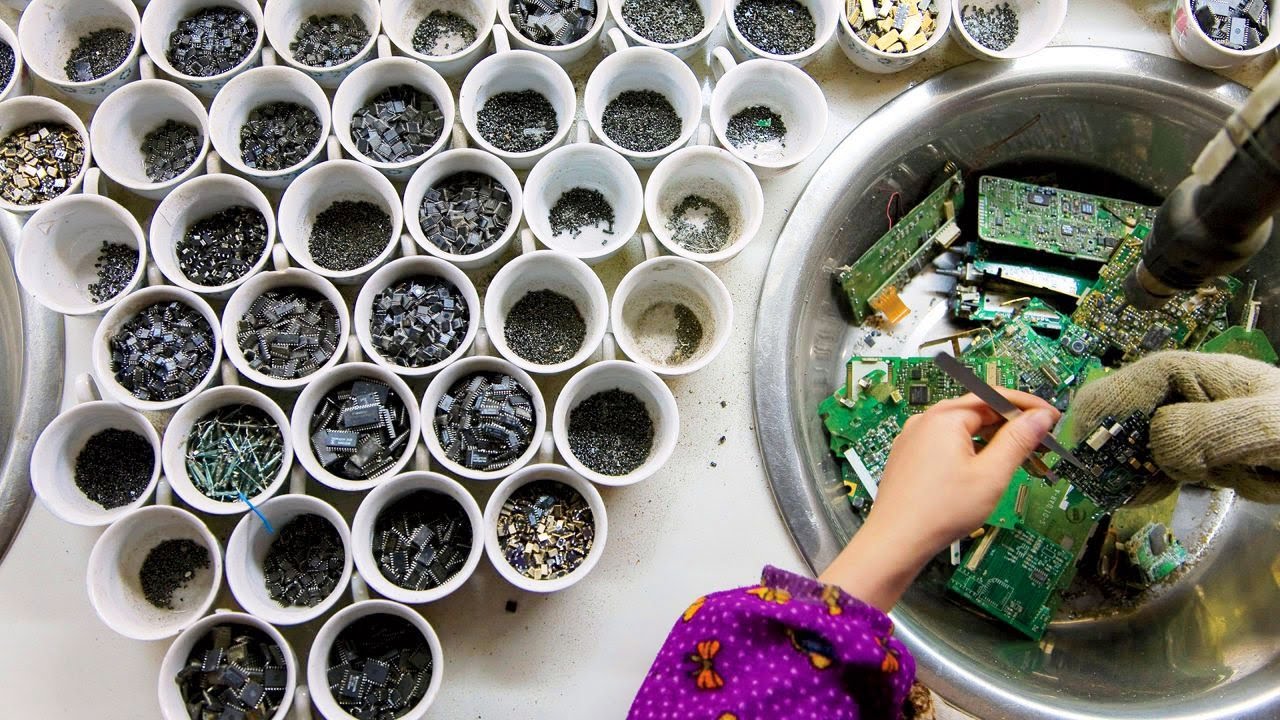The good, the bad and the ugly of global component sourcing
The topic of component sourcing in our overall supply chain has been front and center for us recently. Those of you that have ever worked with NexPCB know that we are laser focused on quality. As a statement of mission, this wouldn't seem to be so hard, but we find that it's much more difficult than it should be. One areas that we find time and time again that this is a problem is in sourcing. More specifically, component sourcing of "branded" items. We've had to completely stop working with a few suppliers recently that have sent us components that didn't meet our standards. This happens with shocking regularity.

I'm sure that many of you are familiar with terms like "knock-off" and "factory second" when it relates to clothing, accessories and other consumer goods. Did you know that this is also a challenge for electronic component sourcing? The same types of people that make the almost unrecognizably good copy of that designer handbag are the ones that can make a cheaper version of that power chip you've put in your BOM. Let's dig into how this happens and what you, as an EMS customer can do.
Counterfeiting
This is the good, old-fashioned knock off. While they may be easy to spot in consumer goods, they can be almost impossible to spot without some serious examination and a healthy amount of cynicism. There are (almost) always telltale signs that you may not be getting what you paid for when it comes to components.
- Price - If the price is too-good-to-be-true, you may not actually be getting the bargain you intend to get. Is someone on Alibaba offering a chip for $.25 each when everyone else is charging $1.50? It will pay to ask some hard questions.
- Visible quality issues - Many times, these knockoffs can be spotted by just looking. One of the most common signs is the printing on the component. If it is fuzzy or the markings don't look quite the same as what the OEM says they should look like, this is another source of alarm.
- Shorter durability cycle/high failure rates - If you are noticing higher-than-expected failure rates or the devices are lasting as long as expected, it's possible that you've found a component that isn't original. Failure rates in most branded components are quite low (<1%), so any abnormally high failure rates demand further investigation.
Parts Recycling
It's all the rage these days to talk about recycling. When we're talking about plastic bottles, aluminum cans and glass casings, this can be a good thing. When we're talking about sensitive electronic components that have little humor for adverse conditions, it's a different story.
Component recycling comes in many forms, but the most common involves removing parts that have already been surface mounted (either by hand or through SMT) and then repackaging them as new. The sophistication with which these operations function is a marvel. Some of the best parts suppliers can be duped by these parts as it can be almost impossible to spot until after these parts have been re-mounted. Some ways to spot this can be :
- Cost (again) - If the price is too low, then it should be a red flag. Market forces are tremendously good at regulating pricing. If a price is way out of the range of the rest of the market, think twice about ordering.
- Connection points - As you may expect, if a component has already been soldered on, there will be some signs that this has been the case. Sometimes these are microscopic, so it pays to spot check components periodically.
- The chips don't look "clean" - This one is a sure sign that something's not right. If you see any particles or obvious damage, then it's time for an adult conversation with your suppliers.
- SMT difficulties - Since the connection points on these components have already been used, these components can cause issues with SMT equipment and may not make proper contact. This is due to not only the materials degrading, but can also be that the recycler shortened the connections slightly to cover up the evidence that the chips aren't new. Since SMT machines are very precise, even a micron can make a difference.
Out of Date or Previous Model Chips
Another areas to be weary of is whether you're getting the most recent lots or models. Many manufacturers will upgrade their technologies but will leave the packaging and overall physical characteristics of the components the same. Some more sensitive components also have a shelf-life after which using these components will not give a good result.
This one can also be hard to spot if you're not paying attention. Oftentimes, manufacturers will use lot numbers that include the date of manufacture. This may or may not include the revision of the chip. Some things to look for are :
- Do the chips "look" old? It sounds strange, but if you've ever seen an older chip, it can very noticeable. Make sure to check lot numbers and manufacturing dates to make sure you are getting what you paid for.
- Assembled products don't pass bench testing - For more sensitive components that have a short lifespan, using very old chips can cause the final testing to fail a higher rate of boards than expected.
- Cost (again, again) - This is now the third time I've mentioned this. If the price is really low, make sure you know what you're getting.
What can you do to minimize these risks?
If you've made it this far, you're probably wondering what you could possibly do in order to deal with these issues. If you're doing global sourcing, manufacturing and/or assembly, it can be very hard to deal with these problems. At NexPCB, we have a process that our procurement and productions teams go through to try and catch these issues before they make it into our customer products.
If you're concerned about this, make sure to ask your supplier or EMS company some questions :
- Do you source components only from official channels?
- Do you spot-check components as they come in to verify they are correct and are high quality?
- Do you have good communication with your SMT to know if there are any components that are causing issues with processing?
- Does the visual inspection of the final product include looking at components?
Hopefully, that will help many of you as you continue on your adventures in global manufacturing and sourcing!
If you have any questions or would like to hear more about how NexPCB puts quality first, drop us a note here and we'll be happy to help you along on your journey!
Posted by Chris Howes

Having had a long career at IBM, Chris joined NexPCB to bring pragmatic solutions to companies that are starting a new hardware adventure. Chris was also a maker before there was even such a term.
